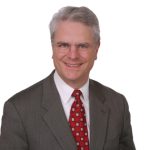Government/Policy

May 30, 2019
Leibowitz on Trade: The Math Behind Chinese Steel Prices
Written by Lewis Leibowitz
Trade attorney and Steel Market Update contributor Lewis Leibowitz offers the following update on events in Washington:
Asked a Steel Market Update reader: Why are U.S. prices now so far below China’s tariff-adjusted prices?
The short answer is that Chinese exports to the U.S. are subject to antidumping and countervailing duties (AD/CVDs) totaling more than 100 percent, on top of the 25 percent Section 232 tariff. That’s why little or no Chinese steel is being exported to the U.S. at present. The math to convert the landed costs for Chinese steel in the U.S. is considerably more complex.
Steel from China (or anywhere) that is subject to AD/CVD, upon Customs entry for consumption in the United States, must pay deposits of estimated duties. The deposits are NOT duties, but payments of estimated duties. The final duties are calculated in “administrative reviews” of entries during a one-year period. A different annual review is conducted, if an “interested party” requests it, each year. The final duties may be equal to, greater than or less than the deposit rates. The deposits are calculated as a percentage of the entered value of each shipment. Entered value is the transaction price (in most cases) net of international freight and insurance (and a couple of other adjustments).
For example: Chinese HRC is $575/MT FOB point of export in China (below the current U.S. price around $660 per metric ton). AD duty deposits are at the “China-wide rate” of 90.83 percent ($522); there is no CVD order on hot rolled flat steel from China ($0); China steel tariffs under Section 232 are 25 percent ($143.75); shipping costs, insurance, etc. are, let’s say, $125/MT. Finally, the Merchandise Processing Fee is 0.3456 percent (about $2.00). The Harbor Maintenance Fee is 0.125 percent ($0.71). The total landed cost in the U.S. in this example: $1,368.46. All duties are cumulative.
The percentages are applied to the FOB price of the steel. Technically, the AD duty deposits would be based on the price at the factory gate, which might be a bit below $575. In some cases, foreign inland freight can be deducted for purposes of assessing regular Customs duties and the Section 232 tariffs. In other words, this example is a bit simplified.
There are other wrinkles. In this example, only the 25 percent required under Section 232 is an actual duty. Most steel products are free of regular Customs duties, so I did not include any amount for that. The AD and CVD amounts are cash deposits of estimated duties, which, after an administrative review, could go up, down or stay the same. The uncertainty of the final duties prompts many steel traders to forgo importing steel subject to AD/CVD. But some companies that carefully monitor their costs and prices can reduce the AD and CVD amounts (especially AD, which is based on prices rather than subsidies that are less likely to change year to year) by participating in administrative reviews.
By the way, AD/CVD can also affect exports from the United States because, under the law, AD/CVD duties are not eligible for duty drawback upon re-export.
Lewis Leibowitz
The Law Office of Lewis E. Leibowitz
1400 16th Street, N.W.
Suite 350
Washington, D.C. 20036
Phone: (202) 776-1142
Fax: (202) 861-2924
Cell: (202) 250-1551







